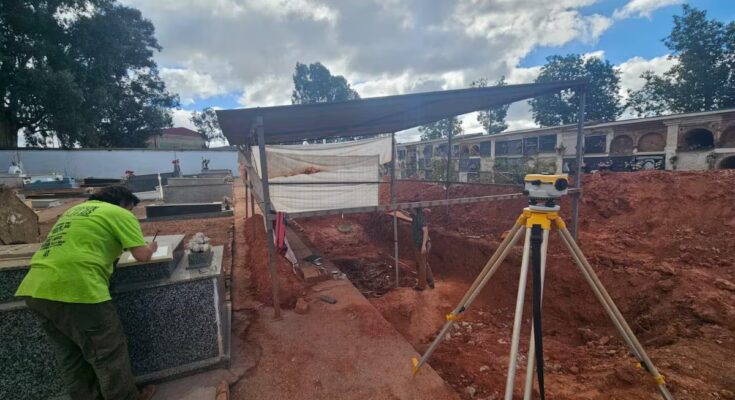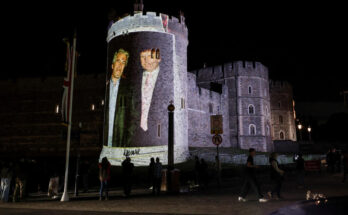The Secretary of State for Democratic Memory and RTVE presented on Wednesday an interactive map with data of the almost 6,000 Civil War graves located throughout the country. Cristina Bravo, director of RNE News, explained that no Spaniard lives more than 50 kilometers from these clandestine burials, some individual and others with the remains of more than 3,000 victims, such as that in the San Rafael cemetery (Málaga). The presentation of the map took place at the headquarters of the Cervantes Institute, whose director, Luis García Montero, served as host and congratulated himself for having organized “an act of memory and against disinformation”.
Fernando Martínez, Secretary of State for Democratic Memory, recalled that 20 years ago he was entrusted with the task of coordinating the preparation of the first map of the tombs of Andalusia. “Since then,” he said, “much progress has been made. During the government of José Luis Rodríguez Zapatero, the state map of graves counted 2,000. Today there are more than 5,000.” The map shows the clandestine burials of the victims murdered by the two sides that faced each other in the Civil War, but Martínez underlined that while “the graves of the winners were exhumed after the war, those of the losers, the republicans, began only with the arrival of democracy and with many difficulties.”
The first exhumations of those shot during the Civil War took place after Franco’s death. “I opened my father’s grave with my own hands,” Esperanza Pérez Zamora told this newspaper in 2012. During the years of the democratic transition, she investigated, city by city, where eight relatives who had been shot were located. He ended up exhuming, together with other families, 150 victims of the Franco regime. In those first years after the dictator’s death, a group of widows and children of those who were shot set out to search for and open the graves where the assassins had thrown their loved ones. In Navarra and La Rioja, kneeling on the ground, with no other tools than a shovel and their own hands, they were accompanied by some priests who were ashamed of the Church’s role during the Civil War, when their ecclesiastical superiors supported the military coup as a “crusade”. The coup attempt of 23 February 1981 stopped that process, which resumed in 2000 thanks to the push of civil society.
The Secretary of State explained that almost 18 thousand victims have already been exhumed. Coroner Francisco Etxeberria estimates that there are around 11,000 skeletons left to be recovered from Franco’s graves. Martínez insisted that opening them “doesn’t open the wounds, it closes them,” and recalled a recent confrontation with “an important PP leader” who asked him: “Why don’t you leave the dead alone?” “I asked him, in turn, what he would do if he knew that his mother was lying like a dog in the mountains. And he remained silent.”
Rosa León, who during the Transition popularized the poem as an anthem against the death penalty At dawn, by Luis Eduardo Aute, current advisor of RTVE, presented the interactive map as “a tool for the memory of today and tomorrow to learn about the reality of the past”. “We all lose when the truth loses; we all fail when we are complicit in the cover-up,” he added. In this sense, Martínez considered it a success that, thanks to the agreement with RTVE, the map of the tombs appears on the website of the Secretariat of State for Memory to increase its diffusion and thus “fight the reactionary wave on a global scale”. Pilar Bernal, director of digital content at RTVE, underlined that the interactive map has a great contribution from the historical archive of the public body, “a legacy of all Spaniards”.
The interactive tool contains information on around 67,000 victims, such as María Domínguez, Spain’s first democratic mayor, who was murdered in 1936 and whose remains were exhumed and identified in 2021. Or those of José Sosa, a tinker killed in 1937. The family was told that he had eloped with another woman. His daughter Pino managed to recover the remains in 2017. José Sosa had not escaped; He lay together with 13 other murdered people in the Tenoya well, in Arucas (Gran Canaria), covered in rubbish and quicklime. They had even thrown the chassis of a truck into it.


